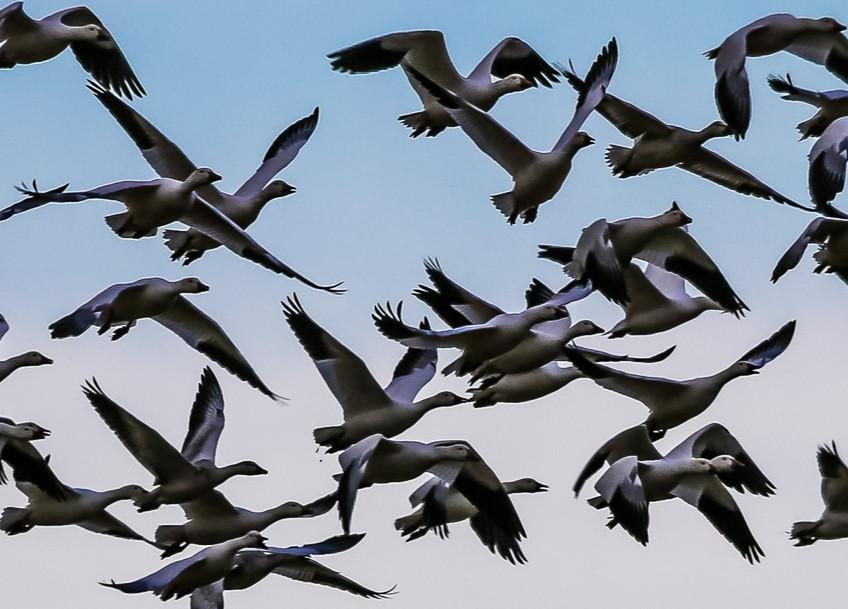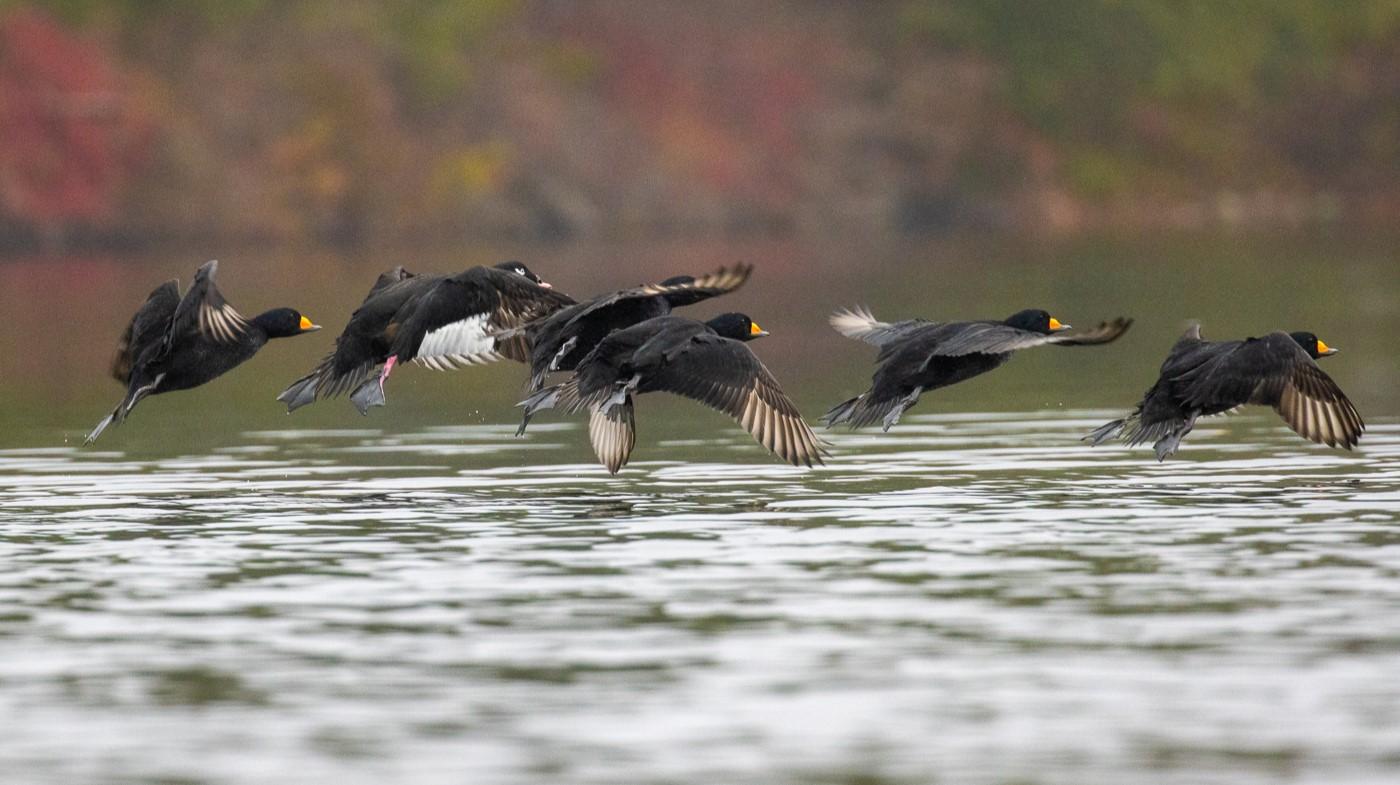- Tags:
- Something Wild,
- Wildlife

Snow geese at Dead Creek in Vermont. (Photo: Jack Dorsey, NH Audubon)
“Birds do some amazing things,” says NH Audubon raptor biologist Chris Martin, co-host of Something Wild, “and migration is at the top of that list.”
Scott Weidensaul is a naturalist and ornithologist now living in New Hampshire who is involved in several research projects focusing on bird migration. He has written more than 30 books on natural history, including “Living on the Wind: Across the Hemisphere with Migratory Birds,” a Pulitzer Prize finalist.
Even after years observing migration, Weidensaul still finds wonder in the journey of young birds migrating for the first time, relying solely on genetic instincts. “You have all these young birds that have never been anywhere before," says Weidensaul, “going to the ends of the earth.”

Weidensaul has experience banding birds as small as hummingbirds and as large as snowy owls. Most recently, he is involved in projects tracking northern saw-whet owls and snowy owls using advanced GPS technology.
He described how an unusually large influx of snowy owls that had migrated south in the winter of 2012-2013 prompted a project using innovative technology that continues today.
”A group of us realized it was an opportunity of a lifetime that we could deploy these new high tech GPS transmitters that communicate through the cell phone network and produce these amazingly precise GPS coordinates - latitude and longitude, altitude and flight speed - as frequently as every six seconds.” he says. “And to learn more about snowy owls than we've ever had the opportunity to do before.”
Thanks to the miniaturization of tracking technology and the explosion of “big data” like eBird and Doppler radar, Weidensaul says it feels like the golden age of ornithology. “It's a fire hose of information right now, and it's really exciting.”
Weidensaul says the advancement in tracking technology enhances our understanding of bird behavior.
“You know precisely how many hundreds of millions of birds are passing overhead on any given night during spring and fall migration,” he says, and recording of nocturnal flight calls pinpoints the species, as well as other information.
Although Weidensaul expresses concern about losing the personal connection with birds as technology takes precedence over traditional fieldwork and observation, he also believes that hands-on experiences, like bird-watching and bird banding, is essential to inspire future conservationists.
“That direct personal connection to see and experience a bird up close changes something deep and fundamental in many, many people who have that experience,” he says.
Something Wild is a partnership of the Forest Society, NH Audubon and NHPR.
